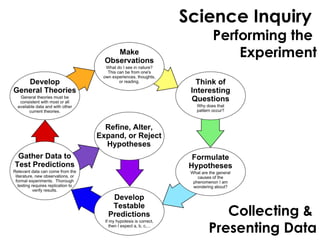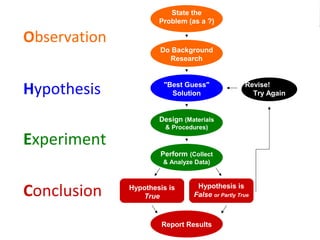The document outlines the key steps of the scientific method: observation, hypothesis, experiment, and conclusion. It discusses performing experiments, including developing procedures, collecting data, and analyzing results to determine if the hypothesis is supported or needs revision. Potential sources of bias are addressed, as well as the importance of collaboration and replication in scientific research. Safety protocols for the laboratory are also covered.












